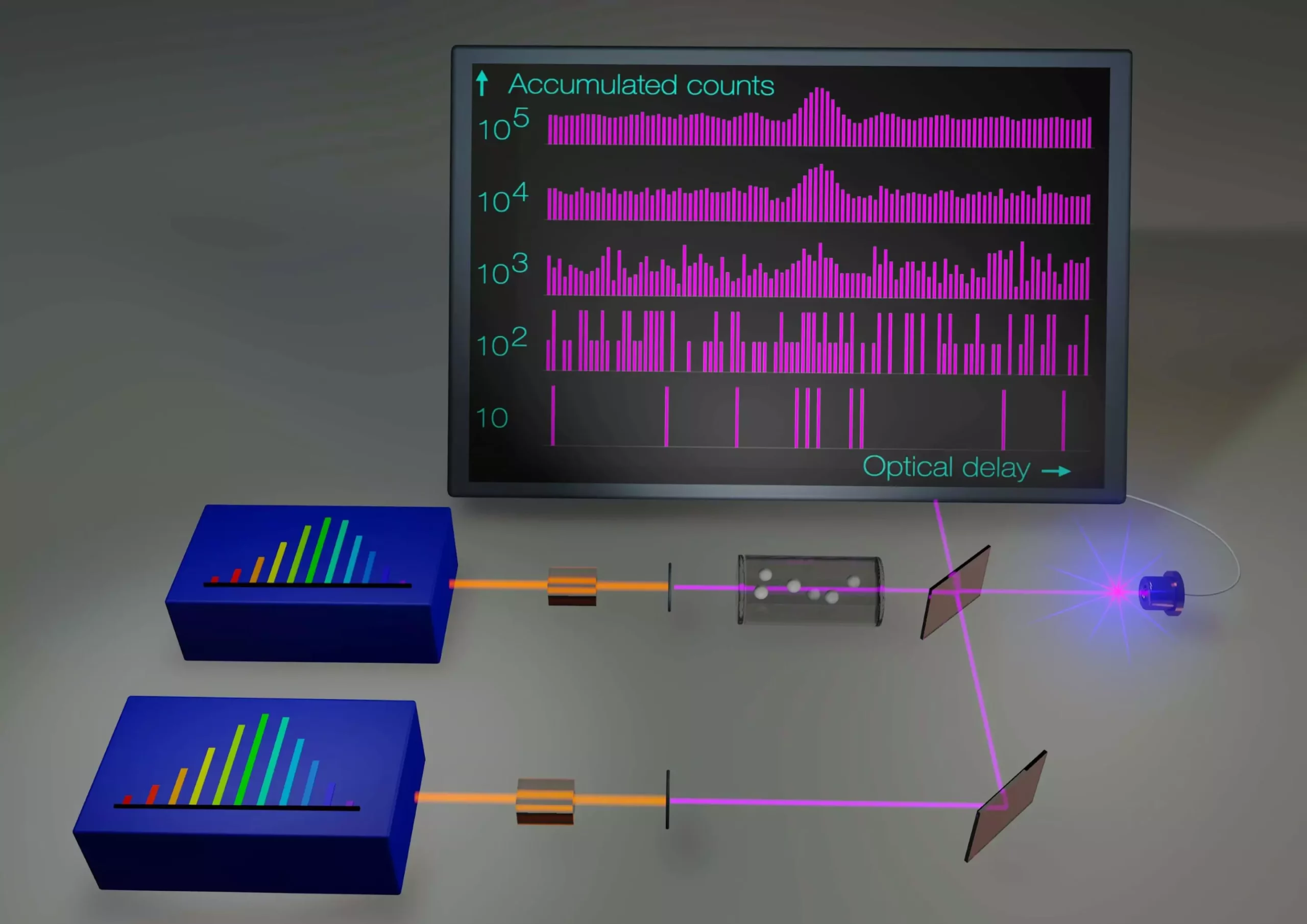Ultraviolet spectroscopy has long been a cornerstone in the study of electronic transitions in atoms and rovibronic transitions in molecules. This field of study is crucial for a wide range of scientific applications, from fundamental physics tests to precision measurements in atmospheric chemistry and astrophysics. Recently, a team of scientists led by Nathalie Picqué at the Max-Planck Institute of Quantum Optics has made a significant breakthrough in the realm of ultraviolet spectroscopy by successfully implementing high-resolution linear-absorption dual-comb spectroscopy in the ultraviolet spectral range.
Dual-comb spectroscopy is a powerful technique that allows for precise spectroscopy over broad spectral bandwidths. Traditionally, it has been used for infrared linear absorption of small molecules in the gas phase. This technique relies on measuring the interference between two frequency combs with slightly different repetition frequencies. A frequency comb consists of evenly spaced, phase-coherent laser lines that enable highly precise frequency measurements. Unlike traditional spectrometers, dual-comb spectroscopy does not suffer from geometric limitations and offers great potential for high precision and accuracy.
One of the main limitations of dual-comb spectroscopy has been the requirement for intense laser beams, making it less suitable for scenarios where low light levels are crucial. However, the team at MPQ has successfully demonstrated that dual-comb spectroscopy can be effectively utilized even under starved-light conditions, with power levels more than a million times weaker than typically used. This breakthrough was made possible through the development of novel experimental setups and photon-level interferometers that accurately record the statistics of photon counting.
The researchers at MPQ have tackled the challenges associated with generating ultraviolet frequency combs and building dual-comb interferometers with long coherence times. By controlling the mutual coherence of two comb lasers with remarkable precision, they have achieved optimal build-up of counting statistics over extended periods. This level of control opens up new possibilities for low-light interferometry and extends the capabilities of dual-comb spectroscopy to challenging scenarios where low light levels are essential.
Looking ahead, the team envisions exciting future applications of their work, including the development of dual-comb spectroscopy at even shorter wavelengths. By enabling precise vacuum- and extreme-ultraviolet molecular spectroscopy over broad spectral spans, this advancement has the potential to revolutionize the field of ultraviolet spectroscopy. Currently, broadband extreme-UV spectroscopy is limited in resolution and accuracy, but with the innovations in low-light dual-comb spectroscopy, new possibilities are on the horizon.
The research conducted by Nathalie Picqué and her team at the Max-Planck Institute of Quantum Optics represents a significant step forward in the field of ultraviolet spectroscopy. By overcoming the challenges of low-light conditions and pushing the boundaries of dual-comb spectroscopy, they have paved the way for novel applications in precision spectroscopy, biomedical sensing, and environmental atmospheric sounding. The future of ultraviolet spectroscopy looks bright, thanks to these groundbreaking innovations.



Leave a Reply